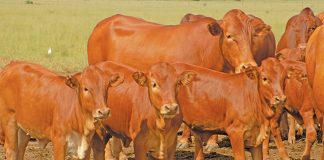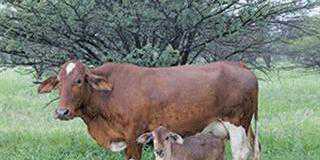IMAGE: 1. (Left to right) Partner and manager of Finchley Broiler Breeders, Rowan Holt, and the designer and builder of Rowan’s new super-sized broiler breeder houses, Brett van den Broeck of Dorna Distributors, believe the future of successful broiler breeding lies in larger houses, generating large quantities of uniformly-sized eggs that will benefit broiler hatcheries and broiler growers alike.
2. In Roxell’s Spark Cup drinking system the cups prevent water spillage while still making it easy for the birds to drink as much water as they need. The arches in the pipe between the cups allow the broiler breeders to move easily to the nest boxes.
3. The layout of the feeding and drinking systems in Rowan’s new broiler breeder houses. On the far left is a single row of male feeders, then three rows of female feeders, with the drinker line on the far right. All run parallel to the nest system that divides the house in two lengthways. The cockerels have to walk through the females to get to water from their feeders, and so will mate more often with the females on the way. This improves egg fertility percentages.
4. This water pumping system can be used to vaccinate or medicate the broiler breeders in the house. When the treatment is finished, it is easy to flush the unused medication out of the drinking system and resume normal freshwater flow. Dosatron is used to regulate the volume of medication that enters the birds’ drinking water in the house.
5. Rowan’s new 156m x 15m broiler breeder house has been designed to maximise the hatchability of the eggs produced. Air flow and temperature are optimal, the house lights are offset to provide a slightly darker area over the nest system (centre) and feed and water are easily available to the birds. The house is also easy to clean and disinfect between cycles.
6. The automated nest system has individual nest boxes that lie adjacent to a hidden egg conveyor belt. Before climbing into the nest boxes, the hens walk over a slatted surface that cleans their feet. They lay their eggs on soft red Astroturf in the nest boxes that protects the eggs from damage. The eggs then roll a short distance onto the conveyor belt, from where an operator packs them into setter trays.
On the side of a small hill in the Dargle valley near Howick in KwaZulu-Natal is the largest broiler breeder (BB) laying house ever built in this country. Some 15m wide and 156m long, this 2 340m2 behemoth on Finchley Farm will soon house 14 000 mature BB hens and cockerels. A second laying house will be used for rearing BB pullets, and a third is being built further down the slope. S ome say such large BB houses are unnecessary and evidence of more money than sense, but nothing could be further from the truth. Rowan Holt, managing partner of Finchley Broiler Breeders on Farm, says his decision was based on sound advice from both financial and BB experts, including his stepfather and business partner, chartered accountant Stewart Johnstone. “It boils down to meeting the needs of the fertilised broiler eggs market more effectively while at the same time reducing running costs,” Rowan explains. “If we can produce more quality fertilised broiler eggs, economies of scale mean our input costs will decrease.”
Hatchability is the key
It is all well and good to have these massive BB houses, but as any good farmer will tell you, the bigger a business gets the more difficult it is to manage properly. In the BB fertilised egg business, the hatchability percentage – not the quantity – of the eggs produced is fast becoming the basis on which South African broiler hatcheries pay their suppliers. This means managing hatchability in big BB houses is of utmost importance. “We had to get food and water to the birds efficiently and at the same time control the house’s environment minutely. We also needed a nest-box system that would not damage the eggs, while allowing them to be handled as little as possible to minimise possible contamination,” Rowan explains.
The nesting system
Rowan’s nest box system is called the Kokoon automatic community nest for broiler breeders, and it was designed and manufactured by Roxell. It stretches down the entire middle section of the BB house and, according to Brett, can accommodate 250 BB hens per nest box per day. “This system creates a comfortable shadowy environment where the hens can lay their eggs,” explains Brett. “The Astroturf nest pads are slightly raised on one side, to encourage the hens to lay as close as possible to the system’s egg conveyor. When the egg is laid it rolls onto the conveyor, which is covered so the birds cannot damage the eggs. also has a cool environment to prevent the unwanted development of the embryo before the eggs are placed into the hatchery’s setter machines.”
Minimal handling
The eggs on the conveyor are collected several times a day. Only one person is needed to sit at the end of the conveyor system and pack the eggs directly into setter trays – the only time the eggs are handled. This single handling reduces the risk of egg breakage and contamination. The filled trays are placed directly into the BB house’s cool room, from where they are later trucked to Rowan’s hatchery client, the newly-built Keystone Hatchery. “The nest system is on a timer that opens the nest doors when the laying house’s lights come on and closes them six to eight hours later when the lights go off again. Most hens lay their eggs within hours of the lights coming on every day, so when the lights are about to go out, the nest box system gently ejects any hens still in the nest boxes before closing up,” Brett says. “We have also set the house’s lights towards the sides to create a darker environment over the nest system. This encourages the birds to lay their eggs in the system instead of on the laying house floor. Floor eggs can’t be used because of the possibility that they are contaminated.”
The feeding system
Rowan’s Kixoo pan feeding system for broiler breeders, also produced by Roxell, uses oval feed pans. They allow up to 16 hens to feed from a single pan, efficiently using space, without blocking the way to the nest system for other hens that need to lay. This feeding system has a facility to prevent cockerels from eating the hens’ feed and vice versa. It is important to regulate the feed of both sexes so that they work together to produce eggs of the best possible quantity and quality. It is also important that all the pans fill at the same time so the birds do not compete for food. To achieve this, premixed feed from an outside bin is augered into feed pipes in the house. At feeding time, the house’s computer releases precise quantities of feed into each pan simultaneously. The system not only contributes to healthy birds that produce healthy eggs, but also reduces costly wastage.
Bird-activated drinking cups
“Instead of the nipple drinking system that often leaks, blocks and is difficult to access, we have installed the Roxell Spark Cup drinking system,” Rowan continues. “A single row of these cups runs on either side of the central nest system, down the length of the house. The birds activate the nipple in the bottom of each cup when they want to drink. It is difficult for this system to leak or become clogged, and we can even apply vaccines through it because it is linked to a Dosatron.”
Ventilation
Controlling interior temperatures and ventilation is very important in the massive closed-environment house. Fourteen thousand BB hens generate a lot of body heat and need a lot of fresh air, so Brett designed a complex electronically controlled air intake and extraction system. Large extractor fans at one end of the house draw warm stale air out, and at the same time cooler fresh air is drawn in through a series of vents at the opposite end and passes over the birds. There are a number of smaller intake fans at various points down the length of the house, which helps create an even temperature and oxygen gradient throughout the house so that no birds become oxygen-deprived or heat-stressed. “I’m very happy with this system,” Rowan says. “We have limited mortalities and fewer damaged eggs and we produce more eggs, leading to higher hatchability that makes the R3 million cost of each house worthwhile.” Contact Rowan Holt on 079 493 6785 or e-mail [email protected]; contact Brett van den Broeck on 082 887 0640 or e-mail [email protected].
Optimising laying and hatchability
Large-scale broiler producers in SA can fit tens of thousands of broilers into a single house. The aim is to use the smallest amount of feed to produce bigger, yet uniform-sized broilers for slaughter in the shortest possible time. In theory, placing tens of thousands of uniform-sized day-old chicks in broiler houses should make them grow uniformly. Ideally, the eggs from which these chicks come should also be produced by a single BB flock, with layers of a similar age because eggs, and therefore the day-old chicks, increase in size as the layers get older and bigger.
However, in the past BB fertilised egg producers and their client hatcheries struggled to have single BB-layer flocks that could produce enough eggs to fill the broiler houses up the value chain. “These houses are the future of broiler breeder egg production in South Africa,” says their designer, Brett van den Broeck of Dorna Distributors in Westville. Many factors play a role in the hatchability of broiler eggs, including laying house size, access of cockerels to hens, the nesting system, the feeding and watering systems and ventilation – and it seems Brett has considered them all.













